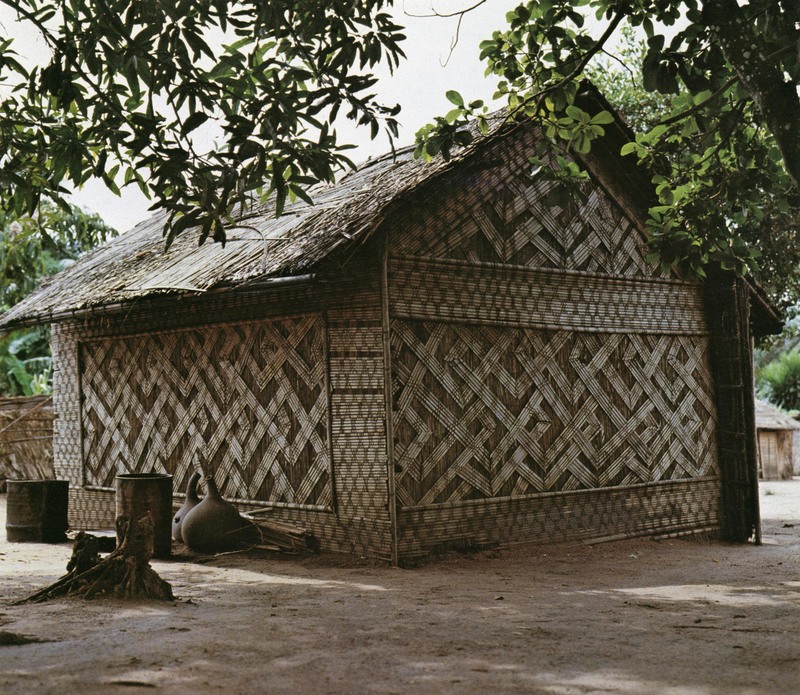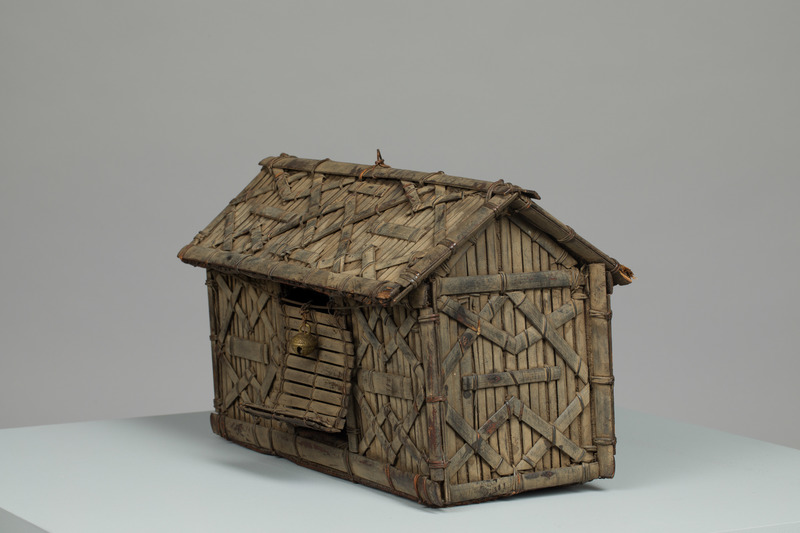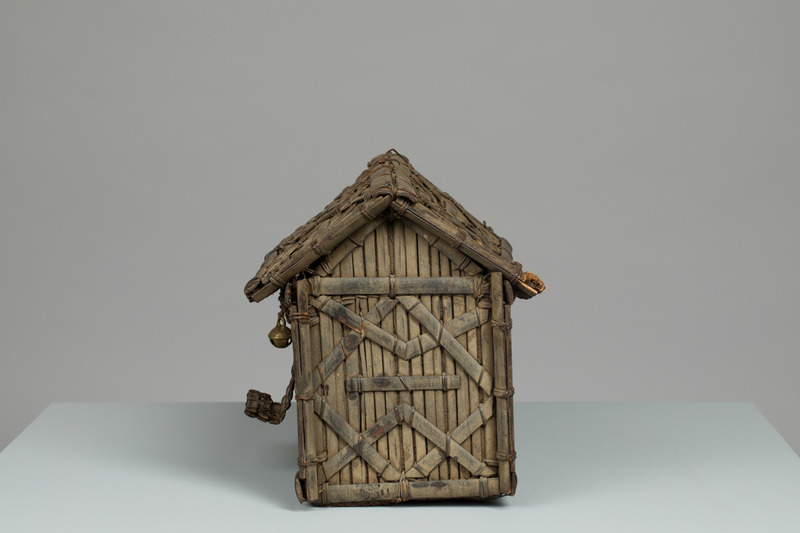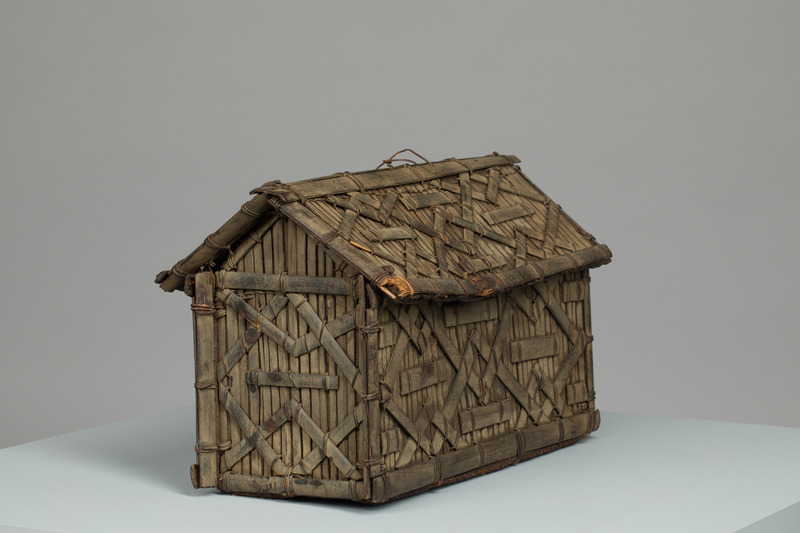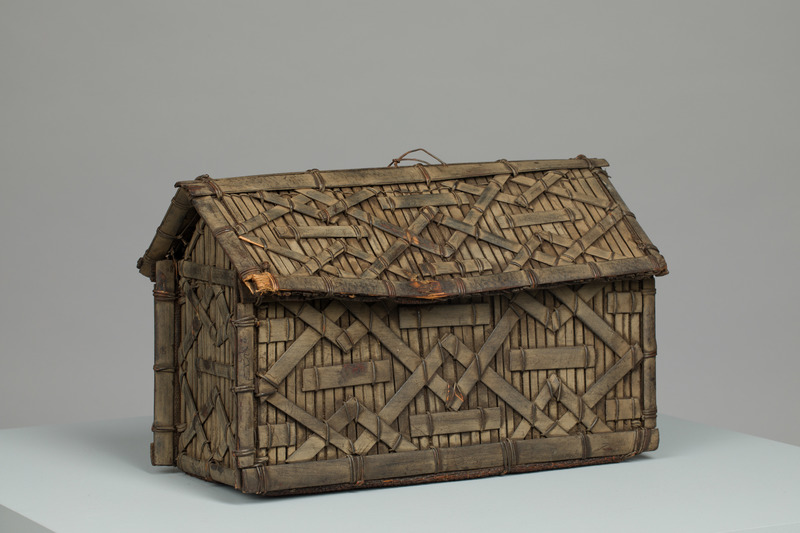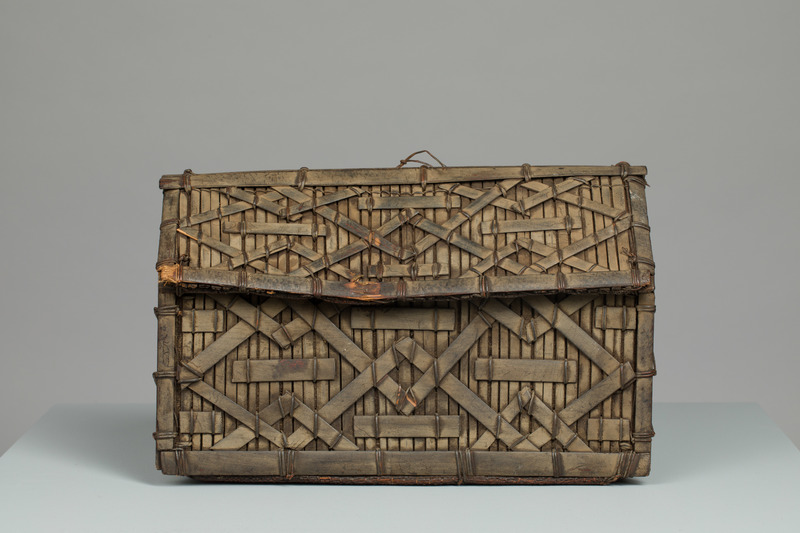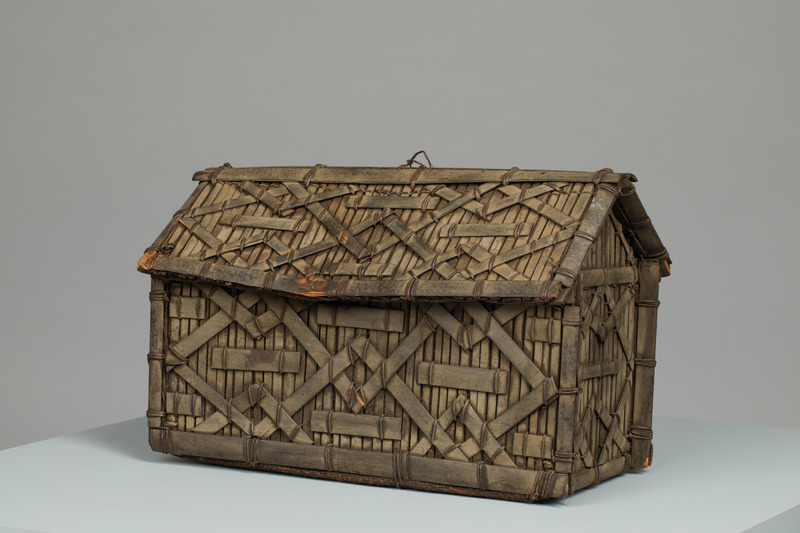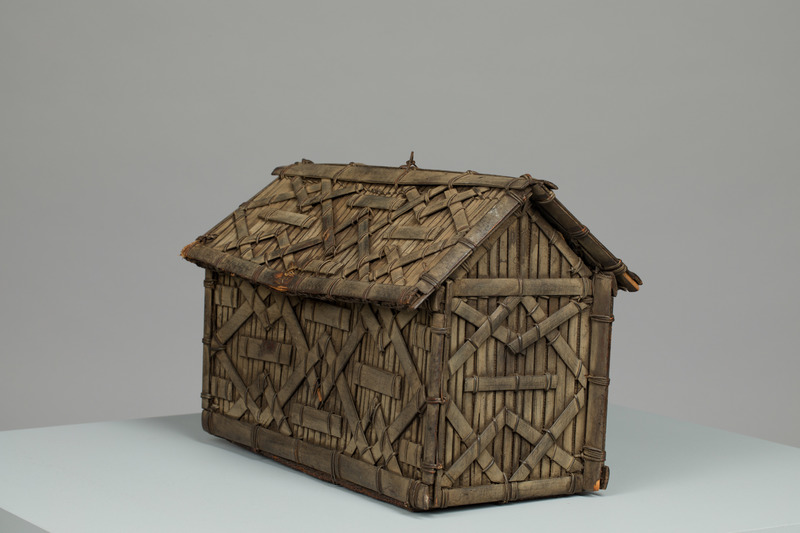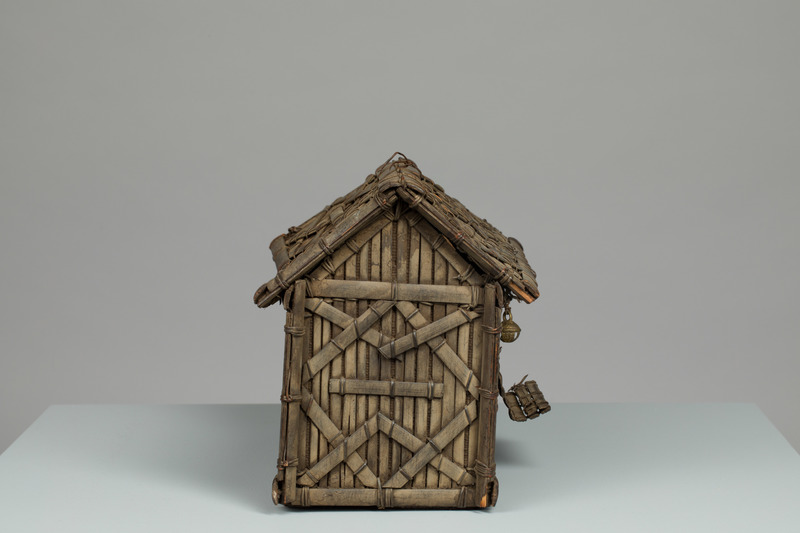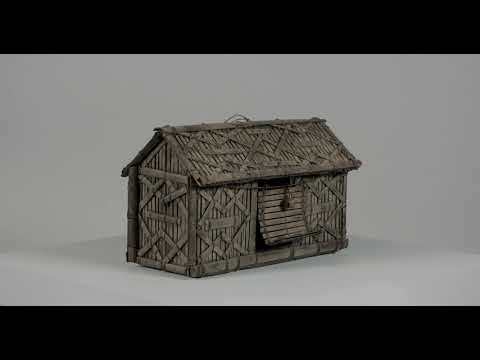Catalogue 42
House Sculpture
Kuba people, Democratic Republic of the Congo
20th century
Wood and fiber; 8 1/4 x 13 3/8 x 5 7/8 inches (21 x 34 x 15 cm)
Collection of Allen and Barbara Davis
This small sculpture replicates the structural design and distinct geometry found in the woven wall mattings of houses in the royal compound. The pattern of interlocking chevrons or diamonds with floating rectangles in the empty spaces is associated with ntshuum anyim, or “the king’s house,” because it is the same design that decorated the exterior of the palace of Kuba king Nshyeeng (Cornet 1982, 158–59, 174). This pattern also decorates the wall of the guardhouse at the entrance to the royal enclosure (Binkley and Darish 2009, 12).
The underlying configuration and the graphic wall patterns of this sculpture, both interior and exterior, are constructed with thin strips of lashed wood. The base of the house sits upon the same type of woven raffia textile that covers the floors of full-size buildings. The ingenious sliding door is topped with a tiny brass bell, also embossed with abstract surface patterns.
Torday describes “the very great beauty” of the symmetric designs produced by the Kuba in their woven mats, particularly those covered with these patterns of “conventionalised natural forms,” as in the “shoots of a tree” motif and others with leafy and vine-like forms. He notes that the same designs ornament the walls of their houses, and elaborates, “one can easily imagine what a lovely sight a Misumba street is, with its regular, spick-and-span little huts, the walls of each formed from such mat-work, every owner vying with his neighbor in surpassing him in his artistic achievement” (Torday 1925, 204).
Missionary William Sheppard visited the Kuba capital in 1892 and described one of the elite structures in the compound, the interiors of which were also extensively decorated: “walls are covered with smoothly woven mats like thick wall paper. The rafters are held up by massive artistically carved pillars of mahogany. The clay floor was covered with mats, except a small space where a slow fire burns continuously” (Sheppard 1917, 112, quoted in Binkley and Darish 2009: 12).
JMP
References
Binkley, David A., and Patricia Darish. 2009. Kuba. Milan: 5 Continents.
Cornet, Joseph. 1982. Art Royal Kuba. Milan: Grafica Sipiel Milano.
Torday, Emil. 1925. On the Trail of the Bushongo: An Account of a Remarkable & Hitherto Unknown African People, Their Origin, Art, High Social & Political Organization & Culture, Derived from the Author’s Personal Experience Amongst Them. London: Seeley, Service.



